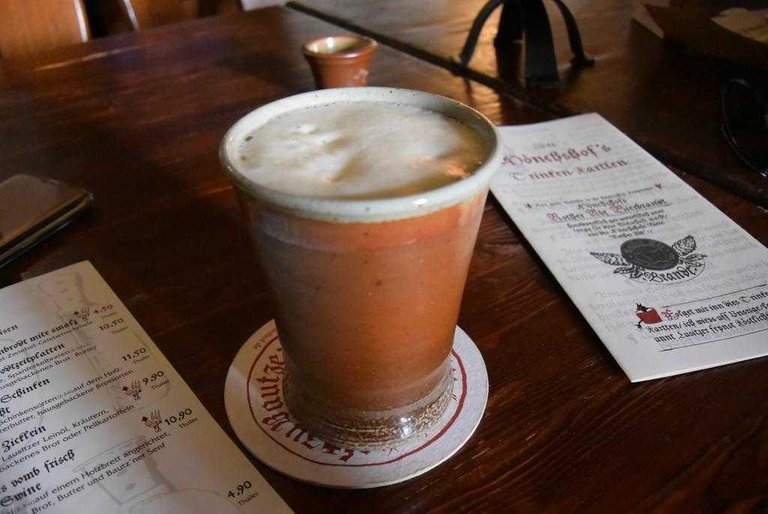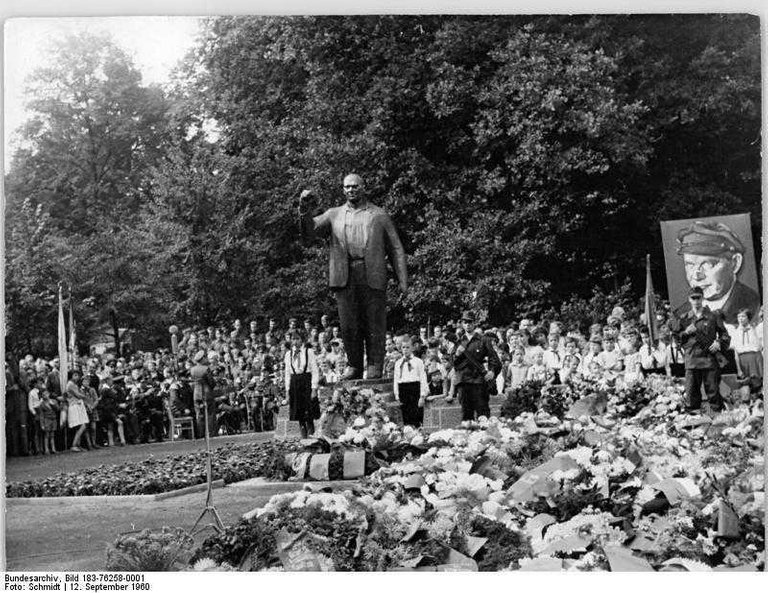Despite the fact that Bautzen - one of the most interesting cities not only in Saxony but also throughout Germany.
Bautzen somehow stands on the outskirts, not on the ant tour path, the desert, in general, here and reaches his hands in last place.

It is located on the river Spree, which flows further to Berlin. Only here is still narrow and turbulent - the proximity of the Czech mountains is affected. The distance is only 50 kilometers from Dresden to Poland, and anyway, and to the Czech Republic is not far away. The border town is a fortress, an unshakable wall, and solitude.

Bautzen was founded in 1002 and is called Budissin. Is this name, or not - still scientists are arguing. Some believe that the name comes from the word "Bud" or "Bod", which means "border". And others say that it was named Slavic Prince Budissentius, who lived in the 9th century a hundred years before the founding of Bautzen. So that's not true.
A local legend says that once in a place where the city later appeared, a noble lady, almost a duchess, gave birth to a child. He has an unbearable desire to travel on the way. At the peak of the moment, her husband exclaimed: "Bude syn?" That boy, they say, will be? Who was born there, duchess, no one remembers, and the question of dukes became the name of the settlement.

Until the 15th century, soon after the city is not named! Even in official documents, nine variants of names are used at once! Baudyssen, Bawdysen, Buditcynn ... Let me not go on this list, I will just say that until now Sorbs, Czechs and Poles have called Bautzen in their own way and ignored the official German version. As for the sorbs, I am not wrong, they are not Serbians, that's another thing. I will tell you more about them.

Slowly Budissin Slavonic began to acquire a German voice: in 1450, "Bucen" was pronounced, 1512 was Boytzen, and in 1523 modern Bautzen appeared. For four hundred years, the names of Slavs and Germans existed in parallel, until June 1868 Germany "lost."
One time, not so long, of course, like a duchess, but also pregnant, I almost visited Bautzen, but did not reach outside the Dinosaur Park. The park is not far from Bautzen, and there is very interesting!
The story began in 1978 with a naked enthusiasm. Sculptor Franz Gruss worships dinosaurs and learns everything related to them. In the break between the statue of the leader of Gadera, he created his favorite dinosaur model. He puts them on his plot and, frankly, his neighbors laugh at him.
Several years, the dinosaurs in the sculpture park became crowded, in 1980 there were 25 statues!
Gradually, Franz Grusz's hobby was interested in the press, tourism companies began to incorporate parks with dinosaurs on their route, it began attending children's schools.
Then the city joined. Under the collection gives a large garden, which is located next to the sculptor's house. Now inside you can see more than 200 models of dinosaurs in full size! He is very fond of tourists and locals, since his opening has already been visited by six million people!

And now, as promised, I will tell you about sorbs. This Western Slavic, settled in the area of modern Germany in the sixth century, in Russian for some reason they are called luzhichans. According to official data, about 60,000 representatives of this nation now live in the world, two thirds of them are in Saxony in Bautzen and surrounding areas and a third on Brandenburg land north of Cottbus. Sorbs managed to preserve their culture and language, although Prussia in 1880 launched a rigid assimilation process. In the following years, the situation has not changed much, the gnobili sorbens!

In the world there is one more place where live sorbs - in America! In 1854, an ethnic group of 500 people boarded the ship "Ben Nevis" and went to find a place where no one was after them. They reached America and established a colony in Texas near Austin. Until 1920, they continued to speak only in their native language, and then assimilated. Nevertheless, the descendants of the emigrants did not forget their roots and founded a museum of historical sorbs, it is located in the former school building of the Sorbians.
A small number of Lusitanians also live in southern Australia, the last carrier of the Sorbian language died in 1957.
In Bautzen sorbs - only 10% of the total population, but the city is still considered a cultural and sorbian cultural center. There are grammar schools, where Sorbian is taught, the Sorbs history museum and the national cultural center.
There are two variants of the Sorbian language: Upper Sorbian and Low Sorbian. The first is very close to Czech and Slovak, and the second is similar to Polish. Unfortunately, almost no one speaks Nizhetsorgsky, his language is almost extinct.
All sign boards in Bautzen, as well as street names are written in two languages.

Now a little bit about the city itself. The old town was built on a rock, above it the tower of the fortress of Ortenburg. It's surrounded by a fortress wall, which was formerly the city's border.

The city's environment settled in the Stone Age! In the 3rd century there was an East German settlement on this site, then Poles came and lived in Bautzen until 1031, until they were expelled by the Romans. What have they forgotten here? They have an interest. The fact is that Bautzen stands on the trade route between Rhine and Schlesia, a strategically strategic piece of Rome can not ignore their attention.
Next came a series of wars, changes of rulers, until the monks came into the 13th century and stopped for a few shameful centuries. The city turned monotonic. The monks are very fighting, real soldiers! But they know how to cook beer, and the rest are not fighting monastic fights. Beer according to ancient monastic recipes can be tried in some Bautzen restaurants. If the restaurant owner does not lie, of course.

I will not mention all the conquerors of Bautzen, it is too full of lists, but even Russian troops are fighting for Bautzen - on the Prussian side against Napoleon! Especially since I would still write a separate article about the Ortenburg fortress, and the history of the castle is the history of the city.
What will not actually be in the next article is the story of a new and very sad period of National Socialism and World War II. I'll tell you about this a little now.
When Hitler came to power, there were many opponents in Bautzen. Socialist, communist and for some reason Jehovah's Witnesses were arrested in early 1933 - only 500 people from Germany and the Sorbos against the Fuhrer. Closer to the Second World War, their numbers are counted in the thousands. Among them, in 1943-1944 was Ernst Thalmann. The concentration camp in Bautzen for him was the midpoint before being sent to Buchenwald.
As for the war period itself, Bautzen was seriously wounded in April 1945. Almost all bridges were blown up, St. Michael was destroyed, a large number of people killed or wounded. By the way, it was under Bautzen that the last major German tank battle was awarded. Germany managed to defeat the city, it surrendered only after the submission of the German fascists.
After the war, the NKVD prisons and concentration camps for internal enemies of the newly formed young state were stationed at Bautzen, called camp No. 3. 4. Prisoners are judged by Soviet military tribunals. A total of 27,300 people were kept in camp barracks, one in three of whom died of starvation, illness and poor conditions of detention. About 4,000 people were deported to the Soviet Union for forced labor. How many are executed, I can not say the exact number, I will only say that Bautzen has long been the site of the execution of all the detainees of Saxony. The prison was closed only in 1992.
With GDR, Bautzen thrives! A car-building factory, a cotton mill, a machine-building institute, a pedagogical factory built here ... Now most companies are closed, especially city life by tourism. It is, in general, good for the environment and useful. Anyway, around the mountain and the reserve ground





